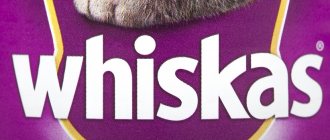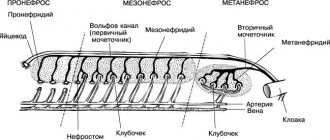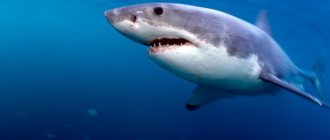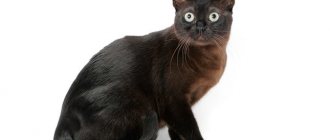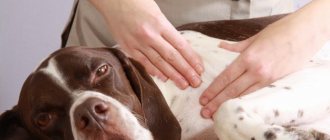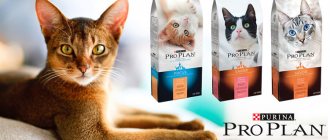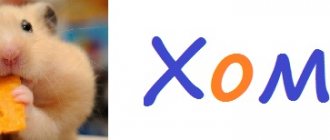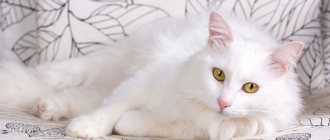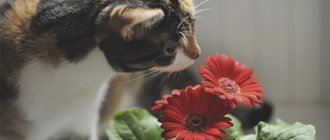Caring for a pet requires patience and responsibility. The most important point in this matter is a balanced diet, as a result of which the cat should receive all the necessary minerals, vitamins, trace elements and amino acids.
In this article we will tell you what taurine is, what its benefits are for the cat’s body, and why it is always included in modern foods and treats.
What is taurine and why does a cat need it?
Taurine is an amino acid. The mammalian body produces it itself. It turns out that pets are always lacking it. Cats that hunt and eat rodents naturally supplement their taurine deficiency. Pets need to add this element to their food.
They first heard about it when German scientists obtained it from ox bile. Taurine is created on the basis of cysteine, which forms tissues and other substances necessary for the body, and neutralizes toxins.
Why is taurine so necessary for cats? There are a few of the most basic reasons to be convinced of the importance of taurine:
- It strengthens the body's defenses . Those cats that do not have enough amino acids get colds more often and stay sick longer.
- The functioning of the liver and kidneys improves . Fats in the body are digested with the help of bile, in the formation of which taurine takes part.
- Sugar is normalized . Diabetes mellitus is very scary for cats, its treatment is quite difficult and expensive. On top of that, complications are possible.
- The digestive organs work better . No bloating, good digestion and absorption of nutrients, monotonous stools.
- Improving wool quality . It becomes shiny, smooth, does not climb, and takes on a healthy appearance. The animal looks well-groomed and beautiful.
- The cardiovascular system, brain and nervous system work harmoniously.
- The birth of healthy kittens . This amino acid is important in the development of the fetus and during the cat’s pregnancy.
Reference! Considering all of the above, it should be noted that this substance is vital. It is involved in many body processes.
Signs of food allergies
How can you tell if an animal has a food allergy? To do this, you need to know the symptoms of a cat's food allergy. The most striking signs of the disease are:
- Severe itching of the body (the cat itches literally incessantly, unable to fully relax even during sleep);
- The appearance of hairless areas on the body as a result of constant scratching (initially on the face, ears, stomach, limbs, and if left untreated, bald patches form in other areas);
- Ulcers and purulent blisters on the skin due to dental trauma;
- Redness and darkening of the skin;
- Mucus discharge from the eyes, nose and ears;
- Heavy breathing, shortness of breath even with minimal exertion;
- Cough;
- Frequent sneezing due to itching in the nose;
- Swelling of the extremities;
- Sometimes vomiting and diarrhea;
- Sometimes a slight increase in temperature;
- Nervousness, anxiety (the cat is almost constantly in a bad mood);
- Loss of appetite.
What happens to a cat’s body with taurine deficiency?
Taurine deficiency is not immediately noticeable. If the animal is healthy and has a strong body, then the lack of amino acids does not appear at all at first. If the following symptoms begin to be observed, then it is imperative to take measures:
- First, vision decreases . Observing your pet, you can notice that he began to bump into various objects, seemingly for no reason. The cat needs urgent treatment, as there is a risk of complete or partial blindness.
- Dilated cardiomyopathy develops . The first step to heart failure. Oxygen starvation and uneven heart rhythm appear. The animal begins to eat and move less, and its body temperature becomes lower. If noticed in time, the condition can be quickly cured.
- Dental problems. They break down and fall out.
- Frequent respiratory diseases . A persistent cough and cold in the respiratory tract should alert the owner.
- Blood clotting is impaired.
- Animal growth is impaired.
- Increased nervousness and fearfulness of the cat.
- Complications during pregnancy and childbirth . Kittens may be born with birth defects or premature.
Even if there is not enough taurine in small quantities, the animal becomes lethargic, inactive, and eats poorly. Some advanced diseases may no longer be curable. Therefore, you need to provide your pet with adequate nutrition and care.
Attention! Breeders must monitor the taurine content in the diet of their pets to ensure healthy offspring.
Overdose symptoms
Since the cat’s body cannot produce taurine on its own, the owner is obliged to ensure that the pet meets this need. It is very rare, but quite possible, for cat owners to overdo it.
An overdose can be considered if the following symptoms are present:
- the appearance of itchy rashes on the skin of the pussy;
- persistent vomiting and diarrhea.
As a rule, excess taurine in food is eliminated without problems by the body of a kitten and an adult kitty. Therefore, cats that have an individual intolerance to this sulfur-containing acid more often suffer from the listed adverse reactions.
What foods contain taurine?
In the wild, cats obtain this essential element by catching rats, mice and other rodents. Their meat contains the most essential microelements and taurine for the body.
Advice! Each cat should receive an average of 1000 mg of amino acid per kilogram of dry food and 2000 mg of wet food per day.
Taurine has been added to cat food since the 70s. Currently, all dry and wet foods contain taurine. It must be said that in cheap economy class food the taurine content does not meet the daily requirement, so it is better to switch to other food or buy vitamins.
For dogs, this element is not added, because the dog’s body produces it on its own. Therefore, you cannot use dog food for cats!
Important! Boiled meat has a lower taurine content than raw meat. Owners who feed boiled food to their pets should be aware that it does not contain enough substances necessary for the cat. Additional additives must be used.
Consider natural products for cats containing taurine:
| The product's name | Taurine content (mg / 100g) |
| Dark meat turkey (thigh) | 360 |
| Raw tuna | 284 |
| Dark meat chicken | 170 |
| Raw red fish | 130 |
| Chicken by-products | 117 |
| Beef heart | 65 |
| Necks and backs of chickens | 58 |
| Raw beef | 43 |
| Boiled beef meat | 38 |
| Rabbit meat | 37 |
| Cod raw | 31 |
| Light turkey meat (breast fillet) | 30 |
| Raw chicken fillet | 18 |
| Carp | 9 |
In general, the leaders in taurine content are seafood and fish: shrimp, mussels, tuna, oysters. But these expensive products are unlikely to be the basis of nutrition for domestic cats. Therefore, the main sources of amino acids on natural feeding will be: dark meat of turkey, chicken, chicken and beef offal.
How to fix the situation
Cats begin to replenish taurine by correcting their diet. The animal is switched to premium and super premium food, or meat and fish are introduced into the diet. The transition to a new type of food or a new brand of food is carried out gradually, over 2 weeks, to avoid stomach and intestinal upset.
But in addition to replenishing the diet with amino acids, tablets or powders are additionally prescribed. For example, Debikor. The dose for a cat is 250 mg twice a day. The course is at least 3 months. The “excess” substance, which is not absorbed by the body, is excreted in the urine without causing harm to health. The animal's condition returns to normal within 1-2 weeks.
Amino acid in industrial feeds
We reviewed several popular brands of dry cat food. The dosage of taurine may vary from batch to batch, so the data presented in the table is an average.
| Name of food | Taurine content mg/kg |
| Brit Care Sterilized | 2300 |
| 1st Choice | 2100 |
| Royal Canin | 1700 |
| Pro Plan | 1500 |
| Grandorf | 1500 |
Important Tips
Taurine is of particular importance for cats, since this substance cannot be synthesized on its own. It is worth paying attention to several rules for its introduction into the diet:
- This medication is sold in pharmacies without a prescription. This does not mean at all that you can buy it and give it to an animal for absolutely any ailment. The supplement can be given only as prescribed by a specialist, after a comprehensive diagnostic study.
- It is strongly not recommended to skip taking the vitamin, as the effectiveness of treatment will noticeably decrease. If this cannot be avoided, then in no case should the animal be given a double dosage of medication at the same time to fill this gap.
- You should closely monitor your pet for several days after taking the supplement. If frequent diarrhea occurs, you should stop taking it. You should contact a specialist to adjust your treatment.
Cats are the most common pets. They are always affectionate, sweet and kind. Is it possible to allow this lovely creature to suffer from taurine deficiency in the body?!
>Taurine for cats
Prevention
Seafood, raw meat, especially heart or brain are rich in taurine. It is better to give meat to the animal, having previously chopped it into medium pieces, since finely chopped and beaten meat contains less taurine.
To prevent diseases during natural or economical feeding, it is best to use nutritional supplements. Their use protects the cat’s retina from atrophy and helps the animal feel healthy.
Diagnostics
The diagnosis of taurine deficiency can be made by a veterinarian after a physical examination of the cat. Diagnostics may include the following research methods:
- general blood analysis;
- general urine analysis;
- biochemical blood test;
- electroretinogram - examination of the retina of the eye;
- ECG.
If taurine deficiency is suspected, your cat may have an electrocardiogram.
Vitamins with taurine
The range of vitamins is quite diverse, so this issue does not cause difficulties. You need to be prepared that the price will not be small. Before buying them, it is better to first consult a doctor to know for sure that these vitamins will not harm your cat:
- Beaphar Kittys Taurine + Biotin . Shape: hearts. Flavor: cheese. There are 180 pieces in a package.
- Omega Neo . Contains squid liver. You can take 3-6 tablets, which contain essential amino acids, for a whole year.
- Gimpet . Shape: hearts or mice. For small pets 3-4 tablets, for adult cats - up to 6 tablets per day.
- Doctor ZOO for cats Biotin + Taurine. There are 90 tablets in a package. When taken, metabolism improves.
- Petvital Vitamin-Gel . Vitamin gel. Prevents the development of urolithiasis.
Farmina (hypoallergenic)
The cat food has earned decent reviews. The manufacturer produces samples that significantly reduce the occurrence of allergic reactions in animals. This is possible due to the absence of popular allergens such as corn and wheat.
However, it must be remembered that the basis of the Farmina diet is high-quality meat. Lamb is mainly used, but chicken is also present. Therefore, this food is not suitable for cats with difficulties digesting meat.
Hypoallergenic foods are free from grains that contain gluten. This is the strength of the brand. Spelled and oats are added instead. They do not cause allergies, promote excellent digestion and control metabolism.
Features of application
Taurine for cats can be found in two main forms: drops and tablets.
The first option is intended for the treatment of retinal diseases. One drop should be instilled 2-3 times a day. Naturally, the animal will resist, so it is recommended to firmly fix its body. The general course of treatment lasts three months. If during this time the problem cannot be eliminated, then you can repeat the procedures after a two-week break.
The dosage in tablets is determined by a specialist, depending on the degree of deficiency of this vitamin in the body. It is almost impossible to force a cat to eat medicine. It is recommended to add it to food or dilute it with a small amount of water.
Literature
- Ginguay A., De Bandt JP, Cynober L. Indications and contraindications for infusing specific amino acids. (leucine, glutamine, arginine, citrulline and taurine) in critical illness. Curr Opin Clin Nutr Metab Care. 2016;19:161−169. DOI:10.1097/ MCO.0000000000000255.
- McCarty MF Nutraceutical strategies for ameliorating the toxic effects of alcohol. Med Hypotheses. 2013;80:456−462. DOI:10.1016/j.mehy.2012.12.040.
- Yamori Y., Murakami S., Ikeda K., Nara Y. Fish and lifestyle-related disease prevention: experimental and epidemiological evidence for anti-atherogenic potential of taurine. Clin Expt Pharmacol Physiol. 2004;31:S20−S23. DOI:10.1111/j.1440–1681.2004.04122.x.
- Sagara M., Murakami S., Mizushima S. et al. Taurine in 24-h urine samples is inversely related to cardiovascular risks of middle aged subjects in 50 populations of the world. Adv Exp Med Biol. 2015;803:623−636. DOI:10.1007/978–3-319–15126–7_5.
- Rosa FT, Freitas EC, Deminice R. et al. Oxidative stress and inflammation in obesity after taurine supplementation: a double-blind placebo-controlled study. Eur J Nutr. 2014;53:823−830. DOI:10.1007/s00394–013–0586–7.
- Kim C., Cha YN Taurine chloramine produced from taurine under inflammation provides anti-inflammatory and cytoprotective effects. Amino Acids. 2014;46:89−100. DOI:10.1007/s00726–013–1545–6.
- Schaffer SW, Jong CJ, Ito T. et al. Role of taurine in the pathogenesis of MELAS and MERRF. Amino Acids. 2014;46:47−56. DOI:10.1007/s00726–012–1414–8.
- Schaffer SW, Shimada-Takaura K, Jong CJ et al. Impaired energy metabolism of the taurine-deficient heart. Amino Acids. 2016;48:549−558. DOI:10.1007/s00726–015–2110–2.
- Ricci C., Pastukh V., Leonard J. et al. Mitochondrial DNA damage triggers mitochondrial superoxide generation and apoptosis. Am J Physiol. 2008;294:C413− C422. DOI:10.1152/ajpcell.00362.2007.
- Rikimaru M., Ohsawa Y., Wolf AM et al. Taurine ameliorates impaired mitochondrial function and prevents stroke-like episodes in patients with MELAS. Intern Med. 2012;51:3351−3357. DOI:10.2169/internalmedicine.51.7529.
- Park SH, Lee H., Park K. et al. Taurine-induced changes in transcription profiling of metabolism-related genes in human hepatoma cells HepG2. Adv Exp Med Biol. 2006;583:119−128. DOI:10.1007/978–0-387–33504–9_12.
- Ramila KC, Jong CJ, Pastukh V. et al. Role of protein phosphorylation in excitationcontraction coupling in taurine deficient hearts. Am J Physiol. 2015;308:H232−H239. DOI:10.1152/ajpheart.00497.2014.
- Ito T., Miyazaki N., Schaffer S. et al. Potential antiaging role of taurine via proper protein folding: a study from taurine transporter knockout mouse. Adv Exp Med Biol. 2015;803:481−487. DOI:10.1007/978–3-319–15126–7_38.
- Jong CJ, Ito T., Schaffer SW The ubiquitin-proteasome system and autophagy are defective in the taurine-deficient heart. Amino Acids. 2015;47:2609−2622. DOI:10.1007/ s00726–015–2053–7.
- Bai J., Yao X., Jiang L. et al. Taurine protects against As2O3-induced autophagy in livers of rat offspring through PPARΥ pathway. Sci Rep. 2016;6:27733. DOI:10.1038/ srep27733.
- Schaffer SW, Solodushko V., Kakhniashvili D. Beneficial effect of taurine depletion on osmotic sodium and calcium loading during chemical hypoxia. Am J Physiol. 2002;282:C1113−C1120. DOI:10.1152/ajpcell.00485.2001.
- Azuma J., Sawamura A., Awata N. Usefulness of taurine in chronic congestive heart failure. Jp Circ J 1992;56:95−99. DOI:10.1253/jcj.56.95.
- Ahmadian M., Roshan D., Ashourpore E. Taurine supplementation improves functional capacity, myocardial oxygen consumption and electrical activity in heart failure. J Diet Suppl. 2017;14:422−432. DOI:10.1080/19390211.2016.1267059.
- Hu J., Xu X., Yang J. et al. Antihypertensive effect of taurine in rat. Ad Exp. Med Biol. 2009;643:75−84. DOI:10.1007/978–0-387–75681–3_8.
- Katakawa M., Fukuda N., Tsunemi A. et al. Taurine and magnesium supplementation enhances the function of endothelial progenitor cells through antioxidation in healthy men and spontaneously hypertensive rats. Hypertens Res. 2016;39:848−856. DOI:10.1038/hr.2016.86.
- Sun Q., Wang B., Li Y. et al. Taurine supplementation lowers blood pressure and improves vascular function in prehypertension: randomized, doubleblind, placebo controlled study. Hypertension. 2016;67:541−549. DOI:10.1161/ HYPERTENSIONAHA.115.06624.
- Yamori Y., Taguchi T., Hamada A. et al. Taurine in health and diseases: consistent evidence from experimental and epidemiological studies. J Biomed Sci. 2010;17:S6. DOI:10.1186/1423–0127–17-S1-S6.
- Ogawa M., Takahara A., Ishijima M. et al. Decrease of plasma sulfur amino acids in essential hypertension. Jpn Circ. 1985;J.49:1217−1224. DOI:10.1253/jcj.49.1217. A complete list of references can be found on the website https://www.rmj.ru
- Murakami S., Sakurai T., Tomoike H. et al. Prevention of hypercholesterolemia and atherosclerosis in the hyperlipidemia- and atherosclerosis-prone Japanese (LAP) quail by taurine supplementation. Amino Acids. 2010;38:271−278. DOI:10.1007/s00726–009–0247–6.
- Yanagita T., Han S.Y., Hu Y. et al. Taurine reduces the secretion of apolipoprotein B100 and lipids in HepG2 cells. Lipids Health Dis. 2008;7:38. DOI:10.1186/1476–511X-7–38.
- Ulrich-Merzenich G., Zeitler H., Vetter H. et al. Protective effects of taurine on endothelial cells impaired by high glucose and oxidized low density lipoproteins. Eur J Nutr. 2007;46:431−438. DOI:10.1007/s00394–007–0682–7.
- Zulli A., Lau E., Wijaya BPP et al. High dietary taurine reduces apoptosis and atherosclerosis in the left main coronary artery. Hypertension. 2009;53:1017−1022. DOI:10.1161/HYPERTENSIONAHA.109.129924.
- Yoshimura H., Nariai Y., Etshima M. et al. Taurine suppresses platelet-derived growth factor (PDGF) BB-induced PDGF-beta receptor phosphorylation by protein tyrosine phosphatase-mediated dephosphorylation in vascular smooth muscle cells. Biochim. Biophys Acta. 2005;1745:350−360. DOI:10.1016/j.bbamcr.2005.07.005.
- Gokce G., Ozsarlak-Sozer G., Oran I. et al. Taurine suppresses oxidative stresspotentiated expression of lectin-like oxidized low-density lipoprotein receptor and restensosis in balloon-injured rabbit iliac artery. Clin Expt Pharmacol Physiol. 2011;38:811−818. DOI:10.1111/j.1440–1681.2011.05612.x.
- Yamori Y., Liu L., Ikeda K. et al. Distribution of twenty-four hour urinary taurine excretion and association with ischemic heart disease mortality in 24 populations of 16 countries: results from the WHO-CARDIAC study. Hypertens Res. 2001;24:453−457. DOI:10.1291/hypres.24.453.
- Elvevoll EO, Eilertsen KE, Brox J. et al. Seafood diets: and antiatherogenic effects of taurine and n-3 fatty acids. Atherosclerosis. 2008;200:396−402. DOI:10.1016/j. atherosclerosis.2007.12.021.
- Sahin M.A., Yucel O., Guler A. et al. Is there any cardioprotective role for taurine during cold ischemic period following global myocardial ischemia? J Cardiothorac Surg. 2011;6:31. DOI:10.1186/1749–8090–6-31.
- Eby G., Halcomb WW Elimination of cardiac arrhythmias using oral taurine with L-arginine with case histories: hypothesis for nitric oxide stabilization of the sinus node. Med Hypotheses. 2006;67:1200−1204. DOI:10.1016/j.mehy.2006.04.055.
- Schaffer SW, Jong CJ, Warner D. et al. Taurine deficiency and MELAS are closely related syndromes. Adv Exp Med Biol. 2013;776:153−165. DOI:10.1007/978–1-4614–6093–0_16.
- Kirino Y., Goto Y., Campos Y. et al. Specific correlation between the wobble modification deficiency in mutant tRNAs and the clinical features of a human mitochondrial disease. Proc Natl Acad Sci. USA 2005;102:7127−7132. DOI:10.1073/ pnas.0500563102.
- Zheng Y., Ceglarek U., Huang T. et al. Plasma taurine, diabetes genetic predisposition, and changes in insulin sensitivity in response to weight-loss diets. J Clin Endocrinol Metabol. 2016;101:3820−3826. DOI:10.1210/jc.2016–1760.
- Schaffer SW, Azuma J., Mozaffari M. Role of antioxidant activity of taurine in diabetes. Can J Physiol Pharmacol. 2009;87:91−99. DOI:10.1139/Y08–110.
- Han X., Patters AB, Ito T. et al. Knockout of the TauT gene predisposes C57BL/6 mice to streptozotocin-induced diabetic nephropathy. PLoS ONE. 2015;10:e0117718. DOI:10.1371/journal.pone.0117718.
- Kim KS, Oh DH, Kim JY et al. Taurine ameliorates hyperglycemia and dyslipidemia by reducing insulin resistance and leptin level in Otsuka Long-Evans Tokushima fatty. (OLETF) rats with long-term diabetes. Exp Mol Med. 2012;44:665−673. DOI:10.3858/ emm.2012.44.11.075.
- Sivitz WI, Yorek MA Mitochondrial dysfunction in diabetes: from molecular mechanisms to functional significance and therapeutic opportunitiees. Antioxid. Redox Signal. 2010;12:537−577. DOI:10.1089/ars.2009.2531.
- Haber CA, Lam TK, Yun Z. et al. N-acetylcysteine and taurine prevent hyperglycemia-induced insulin resistance in vivo: possible role of oxidative stress. Am J Physiol. 2003;285:E744−E753. DOI:10.1152/ajpendo.00355.2002.
- Trachtman H., Futterweit S., Maesaka J. Taurine ameliorates chronic streptozocin-induced diabetic nephropathy in rats. Am J Physiol. 1995;269:F429−F438. DOI:10.1152/ajprenal.1995.269.3.F429.
- Ikubo N., Saito M., Tsounapi P. et al. Protective effect of taurine on diabetic rat endothelial dysfunction. Biomed Res. 2011;32:187−193. DOI:10.2220/biomedres.32.187.
- Murakami S. Role of taurine in the pathogenesis of obesity. Mol Nutr Food Res. 2015;59:1353−1363. DOI:10.1002/mnfr.201500067.
Consequences of taurine deficiency
The doctor may suspect that there is not enough taurine in the cat’s body due to disturbances that appear in the body. More often, the main blow falls on the digestive tract, organs of vision, teeth and gums, skin and fur.
Oral examination
Lack of appetite
The cat's appetite sharply decreases. He may refuse food for several days, then eat it in small quantities. Gradually he completely refuses to eat. This leads to additional negative consequences:
- weight loss;
- hypovitaminosis or vitamin deficiency, which leads to brittle bones, hair loss, hearing and vision impairment, and deterioration of cognitive functions;
- fatigue, weakness, drowsiness, lack of any physical activity.
Important! Refusal to eat is the first symptom with which people consult a veterinarian. The amino acid actively affects the organs of vision, leading to improved metabolism and regeneration in cells
If it is missing, the following changes appear:
The amino acid actively affects the organs of vision, leading to improved metabolism and regeneration in cells. If it is missing, the following changes appear:
- decreased vision;
- cataract;
- dystrophy of the cornea and retina.
When a cat's vision decreases, coordination in space is impaired. He may often stumble, bump into corners, and fall. While moving, it does not calculate the distance to various objects.
Brittleness and tooth loss
Tooth loss is common in older kittens and cats. If teeth fall out in a mature individual before 8 years of age, this is a sign of disease. Most often, there is a lack of useful elements, for example, taurine in cat food.
Bleeding gums, tooth loss, caries, periodontitis, periodontitis, and pulpitis appear. This is accompanied by severe painful sensations, due to which the cat becomes restless and constantly meows.
Deterioration of coat condition
If the body does not contain enough taurine, the coat stops shining. She becomes dull and lethargic. After a while it starts to fall out. The condition can reach such a stage that the cat remains almost bald. Wool is found on all things in the owner's house, even if the animal does not shed seasonally.
Cardiovascular disorders
First, the cat develops tachycardia. Blood pressure may then rise. The vessels become fragile, and hemorrhages can form even with minor mechanical damage. The most severe condition occurs with chronic deficiency of the substance. Heart failure occurs, which can lead to the death of the pet without treatment.
Pathological condition of the musculoskeletal system
The cat develops osteochondrosis. This is a disease of bone tissue, as a result of which it loses its elasticity and mobility. The lesion forms in the area of cartilage and bone. The cat moves little. It is difficult for him to walk or make any movements. They cause him severe pain. The pet develops a curvature of the spine and limbs. Dislocations and fractures can often occur.
Males and cats lose the ability to conceive, so they will not be able to produce offspring. This condition is especially negative for a breeder who keeps an animal for the purpose of breeding it.
Developmental delay
If there is no amino acid in the animal's food, or the owner does not provide vitamins with taurine for cats, this leads to developmental disorders. This condition is especially dangerous for young individuals. The kitten is significantly behind its litter brothers and sisters.
Why is a deficiency dangerous?
A lack of taurine can cause irreparable harm to a cat’s health, namely:
- Increased risk of infection and colds due to contact with another animal after a street walk.
- Pathological processes in the retina that impair the pet’s vision and result in blindness if not treated in a timely manner.
- Weakened heart muscle leading to dilated cardiomyopathy. Over time, the disease gives way to heart failure, which often ends in the death of the animal.
- The inability to synthesize bile salts that digest fats in the small intestine.
- Problems in the reproductive system, including falling birth rates and increased miscarriages. Born kittens are developmentally delayed and have many unmanifested pathologies.
If your pet does not get enough sulfonic acid, he may become apathetic.
The lack of taurine is not immediately visible, experts say. Symptoms can take anywhere from 5 months to 2 years to develop, depending on the health and age of the pet. The main signs of a lack of substance in cats:
- deterioration of teeth;
- decreased vision;
- hair loss;
- loss of appetite;
- apathy;
- hypothermia.
Food supplements with sulfonic acid and their compatibility with other drugs
Taurine for cats should be purchased at veterinary pharmacies and pet stores. It is sold in tablet form, powder, pastes, crackers, and fortified solutions. The veterinarian will tell you which form of the drug to choose, taking into account the individual characteristics of the pet. In terms of specific brands, the best taurine supplements are:
- Beaphar Top 10. Available in tablets. In addition to taurine, the composition contains trace elements, B vitamins, pantothenic acid, biotin, L-carnitine, nicotinamide.
- Omega NEO. Tablet food supplement containing a number of minerals and vitamins, yeast, omega-3 fatty acids, orlean seed extract. The latter substance has a complex effect, positively influencing the functioning of the gastrointestinal tract, nervous system, and musculoskeletal system. The extract is also beneficial for vision and immunity.
- GimPet Taurine Paste. Paste with a high content of sulfonic acid. The composition also contains vitamins, minerals, and yeast. The last component improves the condition of the skin and coat, normalizes the intestinal microflora.
- Canina Taurin. Powder for adding to dry or wet food. Contains yeast and proteins.
- Ceva. Multivitamin tablets containing sulfonic acid and biotin, which have a beneficial effect on the appearance of the pet’s fur and skin.
There are also taurine-containing treats for pets in various flavors (salmon, cottage cheese, milk). It makes sense to give nutritional supplements to animals that eat natural foods. If your pet eats good food, it does not need an additional dose of taurine. If your cat has vision problems as a result of sulfonic acid deficiency, your veterinarian may prescribe drops containing this amino acid.
There are no data on the compatibility of taurine dietary supplements and medications. If your pet is taking any medications, you should notify your veterinarian.
